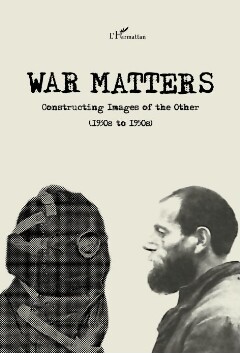
Page 381 [381]

OCR
The Familiar Converted into the Other resentative communication routes. In such a case the new monument appears as a certain ‘obstacle’, an element improperly located. The process of othering may be deepened by such a localisation of a monument, which will place it in a certain opposition (for example by placing the monument with its back towards the main entrance to a temple) to other objects, deemed significant by the community for historical, religious or national reasons. Finally, if the symbolism of the monuments drastically contradicts the symbols that construct its surroundings (for example, opposite the Red Army monuments, there were often religious symbols, or symbols related to the pro-independence traditions of the Second Polish Republic), then it will reveal itself as a foreign element. Concerning the monuments to Soviet soldiers, all of the cases of surrounding space creating Otherness mentioned above took place, although they did not necessarily appear jointly. A different, but related, issue was the process of the othering of the space surrounding Red Army monuments that took place due to the effect of the Otherness of the monument in the urban space. The monuments “(...) transform otherwise neutral places into ideologically charged spaces” (Whelan 2005: 63). The space that surrounded the monuments to Soviet soldiers was specially arranged and rebuilt by the communist authorities. It was the Red Army monuments that initiated the process of the othering of the surrounding space, not the other way round. There was not a case in which urban space was changed or adapted to the monument before it was erected. The othering of urban space as a result of the influence of the Otherness of Soviet monuments occurred in a couple of ways. More often than not, the premises of the most important communist authorities (party offices, courts, the militia—the apparatus of repression), which undertook the construction of “a better world on the Soviet example”, were located around new monuments to Red Army soldiers. This caused the monuments to be seen as a kind of a cosmic axis, around which the national sanctities (communist in spirit) were to concentrate. The ideological project of the authorities, however, assumed that these would be ‘local sanctuaries’, directed towards ‘the East’, and thus, subject to a certain superior structure, with the Kremlin as the axis mundi. The initial purpose and décor of the buildings situated near monuments to the Red Army were not infrequently changed (for example in extreme cases former places of worship were turned into warehouses); alternatively they were obscured by new structures. The communists gradually filled the spaces surrounding the monuments with the symbols of the new rule, not only not restoring the pre-war symbols, but also removing those that had survived the war. The othering of space was reinforced by the new toponymy. The Otherness of the Soviet monuments influenced the changing of street and square names where the monuments were erected.'° In this way the com 13 In Toruñ, a monument to the Red Army was officially unveiled on May 9, 1946. In February 1950, the present Theatre Square was renamed Red Army Square—the name survived until the end of the Polish People’s Republic (Golon 2003: 177). 379
structurelles
Custom
Image Metadata
- Largeur de l'image
- 1890 px
- Hauteur de l'image
- 2776 px
- Résolution de l'image
- 300 px/inch
- Taille du fichier d'origine
- 1.22 MB
- Lien permanent vers jpg
- 022_000055/0380.jpg
- Lien permanent vers OCR
- 022_000055/0380.ocr
